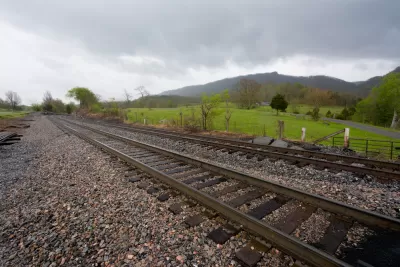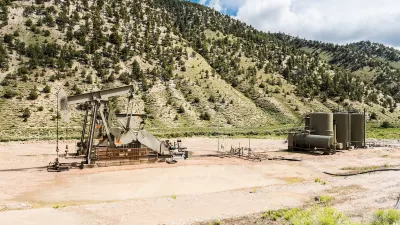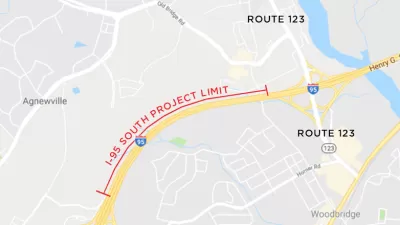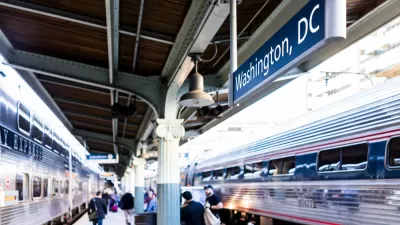A 49-mile length of railway in rural Virginia is at the start of the process of becoming a rail trail.

"Last month, Canonie Atlantic, the company which owns the tracks on the Eastern Shore [in Virginia], petitioned the federal Surface Transportation Board to decommission a 49.1 miles long rail line from the town of Hallwood to Cape Charles. If their motion is approved, that stretch of tracks would be eligible to be rail-banked — a legal process by which abandoned railways can be converted into shared-use walking, biking, and roller skating paths," reports Wyatt Gordon.
Advocates of the trail say that this project could be a huge economic boost for the region, an area which has experienced an ongoing decrease in population in past decades. Other similar projects, including 48 existing trails in Virginia, have been a draw for tourists, hikers, and cyclists, and communities along these routes have benefited from the influx of money to local economies.
"Beyond their recreational and economic value, rail trails can also serve as critical transportation connections, especially in rural areas which lack alternatives to private vehicle ownership," notes Gordon. While the Eastern Shore project has a long way to go, a Virginia Department of Transportation study has been in the works and federal approval to abandon the tracks is expected in November.
FULL STORY: On the Eastern Shore, locals hope a 49-mile rail trail will reinvigorate the economy

Manufactured Crisis: Losing the Nation’s Largest Source of Unsubsidized Affordable Housing
Manufactured housing communities have long been an affordable housing option for millions of people living in the U.S., but that affordability is disappearing rapidly. How did we get here?

Americans May Be Stuck — But Why?
Americans are moving a lot less than they once did, and that is a problem. While Yoni Applebaum, in his highly-publicized article Stuck, gets the reasons badly wrong, it's still important to ask: why are we moving so much less than before?

Using Old Oil and Gas Wells for Green Energy Storage
Penn State researchers have found that repurposing abandoned oil and gas wells for geothermal-assisted compressed-air energy storage can boost efficiency, reduce environmental risks, and support clean energy and job transitions.

Updating LA’s Tree Rules Could Bring More Shade to Underserved Neighborhoods
A new USC study finds that relaxing Los Angeles’ outdated tree planting guidelines could significantly expand urban tree canopy and reduce shade disparities in lower-income neighborhoods, though infrastructure investments are also needed.

California's Canal Solar Projects Aim to Conserve Resources and Expand Clean Energy
California’s Project Nexus has begun generating electricity from solar panels installed over irrigation canals, with researchers and state agencies exploring statewide expansion to conserve water and boost clean energy production.

HHS Staff Cuts Gut Energy Assistance Program
The full staff of a federal program that distributes heating and cooling assistance for low-income families was laid off, jeopardizing the program’s operations.
Urban Design for Planners 1: Software Tools
This six-course series explores essential urban design concepts using open source software and equips planners with the tools they need to participate fully in the urban design process.
Planning for Universal Design
Learn the tools for implementing Universal Design in planning regulations.
Heyer Gruel & Associates PA
City of Moreno Valley
Institute for Housing and Urban Development Studies (IHS)
City of Grandview
Harvard GSD Executive Education
Salt Lake City
NYU Wagner Graduate School of Public Service
City of Cambridge, Maryland





























